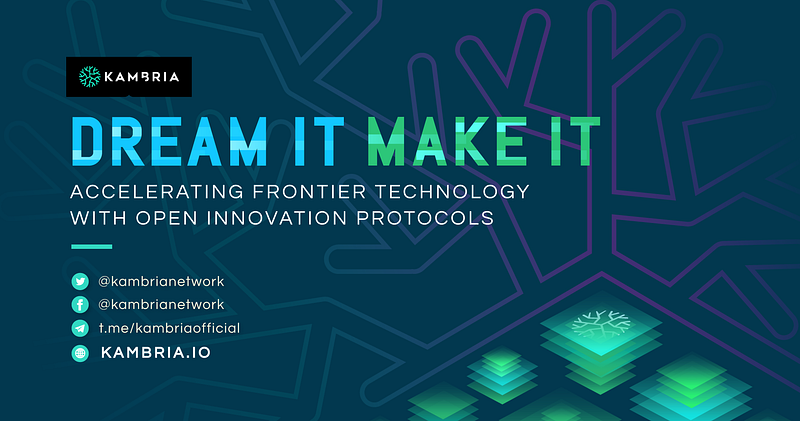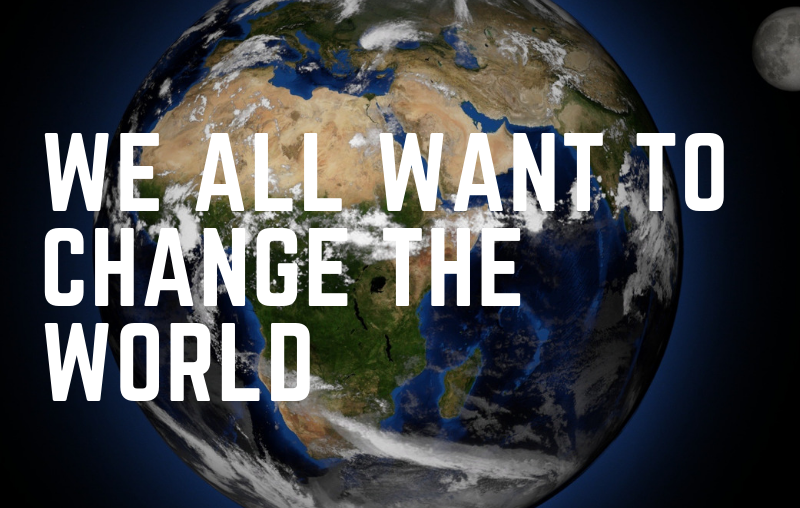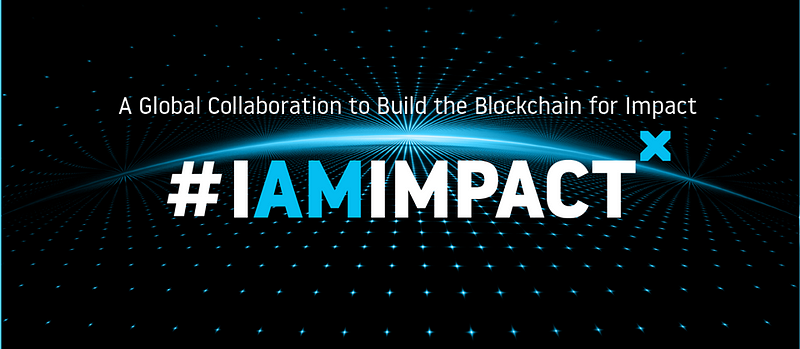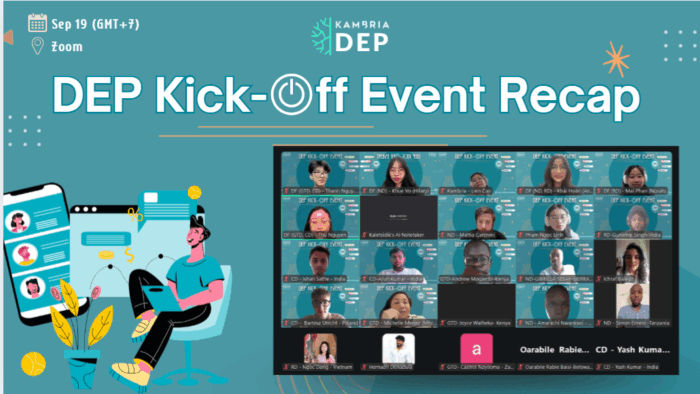Why We Need To Get to Web3 and How
“You say you want a revolution, well, you know, we all want to change the world.” When John Lennon released Revolution with the Beatles in 1968, he may as well have been referring to Web3! No, Lennon wasn’t a futurist or a techie, but he understood the human need to make a positive impact on the world.
Most of us have lived through the tremendous impact of Web2. The global changes have been transformative. To attempt a recap would exhaust us all. But like any other innovation, Web2 is reaching its growth limits and users want more. Luckily, Web3 is on the horizon proposing a new internet architecture and a new way to connect — peer-to-peer, without intermediaries, using distributed systems, employing a new trust infrastructure. In Web3, individuals will be able to participate in a real and meaningful way in changing the world around them. By leveraging blockchain’s built-in trust infrastructure, we can create a “human-centered” internet that can transport us from “eCommerce” to “weCommerce”, from “competition” to “coopetion,” and from “nothing at stake” to “proof of stake.”
The move from centralization to decentralization offers us all a chance to change the world — to develop a Web3 that is owned by everyone, where everyone is incentivized to create value.
This shift from a centralized Web2 to a decentralized Web3 is important for companies to understand because it signals a radical change. The “nature of the firm” — the reason firms exist and how they provide value to their customers — will fundamentally change. Firms will need to reconsider how their company delivers products and services or they will perish. In order to remain viable, firms will need to adopt open protocols, such as public blockchains, that allow anyone to participate.
So why do we need to get to Web3 and how do we do it? Here’s why and how.
Revolution
First, let’s consider that Web3 is a revolution and consumers are already preparing to strike. Articles like this one, “Yes, You Should Delete Facebook,” make a strong case for unsubscribing from Facebook and other platforms that try to control and benefit from our conversations. If you haven’t already noticed, “Facebook’s product is not the platform, it’s us. If the product is what a business sells to make money, then Facebook’s product is our attention and data. We are the product. And Facebook’s customers are the companies buying ads based on that attention and data.” Our data is sourced for profit. Our minds sourced for manipulation.
Today, companies like Facebook and Google have too much control over users and the internet. We know this because back in June 2017, the European Union fined Google $2.7 billion for manipulating search results. The issue was that search results favored Google’s own services rather than rival shopping services. Bad news for small business with manipulation and control at its best.
But consumers are getting savvier and increasingly have more choices over which service providers to choose and how they communicate. One fresh choice over Facebook, for example, is blockchain-based social media company Steemit, which rewards content creators and curators for contributions to its blogging website. Anyone adding value to the site gets paid in tradeable, digital STEEM tokens. The more posts and upvotes (likes) you get, the more tokens you receive. When was the last time Facebook paid you to post a status update?
Another new choice is uPort, which allows users to control their own data. Now we can decide where our data goes and how it is used. It will be our choice whether to revoke rights to other and thereby break the connection to our profiles. With uPort, consumers decide where and how their data is used. In classic power-to-the-people revolutionary style, uPort believes that “everyone has the right to control their own digital identity — how it’s shaped, shared and sustained.” Users can register their own identity on the Ethereum blockchain, send and request credentials, sign transactions, and securely manage keys and data. This is what rebellion + blockchain looks like in Web3.
Evolution
Ok, if you think the revolution analogy is a bit much, then consider Web3 architecture as the natural evolution of human behavior. Through social media, Web2 allows us to connect and interact like never before. In an instant, we can read the latest news, watch videos from around the world, and communicate with like-minded people anywhere. Add Web3 and we can now use blockchain technology to change the world.
Take blockchain-based ixo.foundation, for example, which was created to track and value the impact of contributions on people and the planet. It’s now possible to go from centralized Web2 organizations focused on commerce and profit to cost-effective, highly impactful projects that enable anyone to become a stakeholder in the projects they believe in. One ixo project, Amply, uses a mobile app built to track attendance in pre-schools in South Africa.
The mission of ixo.foundation is big, hairy, and audacious. “What if we could end poverty, protect the planet, no person gets left behind?” But that’s the promise of Web3 — to support us in achieving the next level of evolution.
Go Far
“If you want to go fast, go alone. If you want to go far, go together.” ~African proverb
Another great Web3 business model is blockchain-based Kambria. Kambria is leveraging the power of community to go far instead of fast. It is choosing “coopetition” over “competition” by creating an open innovation protocol that allows developers to work on frontier technology projects together. Unfortunately, today a lot of development work is fragmented or siloed across different environments such as university research, where millions of dollars of waste are created after projects are left unutilized. Moreover, stand-alone companies often invest heavily into R&D and then build a moat of patents and secrets around their inventions to prevent others from innovating on top of their ideas. And tech developed by startups that go belly up is lost forever.

Projects keep pieces of the puzzle to themselves since there is no mechanism to benefit from sharing. That’s what Kambria is trying to change. Kambria is creating repositories for hardware and software components spanning many tech verticals such as robotics, artificial intelligence, drones, self-driving cars, space technology, biomedicine and more. The repositories will be linked to foster collaboration across verticals. For example, autonomous robots will share certain technology components with self-driving cars.
Kambria’s founders developed their own telepresence robot under a company called OhmniLabs, so they understand the hard work of innovating from scratch. Rather than keep all of the tech from that project to themselves, they are contributing it to the Kambria platform. All technology on Kambria will be open and free to use for personal and R&D purposes, with the option for a licensing fee for commercial and enterprise purposes. This collaborative, open approach — managed on the blockchain — is truly the next wave in innovation.
Go Far, Quickly
While blockchain technology is not a viable solution for every company, it is sufficiently important to consider. How can you take part in the revolution by helping customers participate in the collective action of business? Can you employ smart contracts as “automated trust” to facilitate the interactions your customers value? Can you secure customer records or data on an immutable blockchain?
Recently, Forbes committed to regularly publishing content on the blockchain through a partnership with Civil. One possible outcome is that doing so will increase trust with its audience and lead to new forms of engagement. Forbes is one of the oldest and well-known brands in journalism. It is also one of the most innovative.
And earlier this month, Microsoft chose to open-source over 60,000 patents as a member of the Open Innovation Network. Joining the open-source community, which Microsoft shunned in the past, demonstrates a new way of thinking for the tech behemoth. In the 80s and 90s, Microsoft was the world’s largest software company. But the “Windows Era” has come and gone, and today, over 60% of web servers run open-source Linux. Microsoft even runs Linux on about one-third of Microsoft cloud computing service, Microsoft Azure. The server war goes to the Linux army.
Microsoft has learned its lesson. It could not compete against the biggest cooperative software effort on the planet developing free, powerful software with no strings attached. This is what Web3 looks like — open, distributed, consensus-based. Awesome.
So how do you get to Web3? Re-examine the way your company delivers its products and services. Take a look at how you incentivize customers. And figure out whether you’re more of a David or Goliath, Microsoft or Linux.
As an extension of Web2, one war that will be waged in Web3 is the war over data capture. The firms who have the most data will win. At least that’s what Google hopes as it continues to create data farms; currently, Google has over 2.5 million servers. Similar to Facebook, Google profits from acquiring user data and selling that data to advertisers. Will you be able to compete against giants or will you need to adopt an open approach to innovation? The choice is yours.
In 1970, Gil Scott-Hereon wrote a poem and a song entitled, “The Revolution Will Not be Televised.” The song’s title comes from a popular slogan used in the 1960s Black Power movement in the United States. It has been referenced in pop culture ever since. Here is the Web3 version.
The Revolution Will Not Be Centralized
You will not stay siloed, brother
You will not be able to plug in, turn on, and cash out
You will not be able to addict your viewers through scroll and stream
Sell out your audience to sell more commercials
Because the revolution will not be centralized
The revolution will not be centralized
The revolution will not be brought to you by Facebook
Or by a Netflix binge without commercial interruption
The revolution will not publish news about you and your friends
Making money on clicks garnered by listening to conversations
Confiscated from private data and days of attention
The revolution will not be centralized
For other tech-related articles, click here.
Laura Guy for the Kambria Network
Website: https://kambria.io/
Whitepaper: http://bit.ly/2JbuET7
Telegram (ENG): https://t.me/kambriaofficial
Telegram (KOR): https://t.me/KambriaKorea
Telegram (VIE): https://t.me/KambriaVietnam
Telegram (CHN): https://t.me/KambriaChina
Twitter: https://twitter.com/KambriaNetwork
Facebook Page: https://facebook.com/KambriaNetwork
Facebook Group: https://www.facebook.com/groups/kambria/
Reddit: https://www.reddit.com/r/KambriaOfficial/
Medium (ENG): https://medium.com/kambria-network
Medium (CHN): https://Medium.com/kambriachina
Steemit: https://steemit.com/@kambrianetwork
Weibo (CHN): https://www.weibo.com/kambriachina
Email: info@kambria.io









